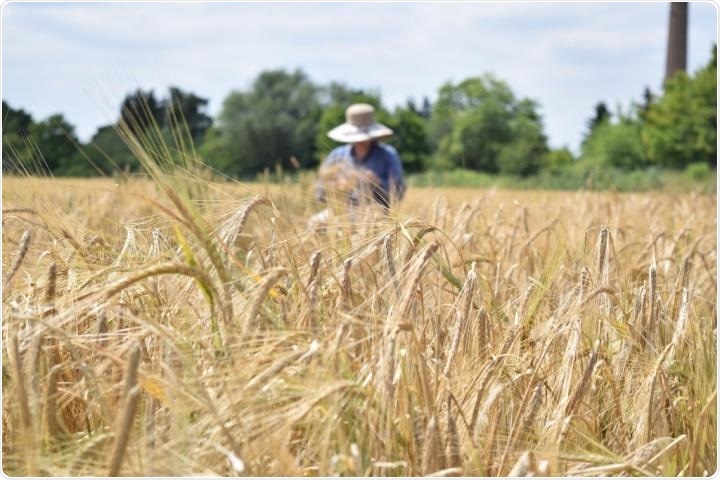The “spikelet meristem,” or SM for short, has a crucial role to play during the development of the grass inflorescence. In essence, meristems are plant tissues or cells that have the ability to create new organs—which are spikelets in this case.

A field of barley near Halle. Image Credit: Nadja Sonntag.
But to perform this, cells ordained to become SM should initially achieve the SM identity. This identity is attained, among other things, by the regulation of genes. Consequently, cells grow normally from meristem to organ. Therefore, the process runs from the undifferentiated plant cell to the differentiated organ.
To have a better understanding of the architecture of grass inflorescence, mutants can be quite revealing to geneticists. For example, the COM1 barley mutation is compromised in such a way that the corresponding cells are unable to convert or perceive the SM identity signal.
Ultimately, the signal transmission does not function properly, so that the cells cannot attain their correct cell identity.”
Dr Naser Poursarebani, Study First-Author, Leibniz Institute of Plant Genetics and Crop Plant Research
Poursarebani also discovered the COM1 gene.
In other words, the cell does not know what to do in this circumstance.
“Thus, spikelet formation along the main axis of the barley spike, the rachis, cannot proceed normally,” added Poursarebani.
Eventually, rather than producing a spikelet, a kind of “branch” develops that resembles a small secondary spike.
Such ‘branching’, however, is very untypical for all spike-forming grasses belonging to the tribe Triticeae.”
Dr Thorsten Schnurbusch, HEISENBERG Professor, Leibniz Institute of Plant Genetics and Crop Plant Research
Dr Schnurbusch is the head of the independent research team called Plant Architecture,. He is also the Martin Luther University Halle-Wittenberg and the initiator of the study.
In the case of barley, COM1 usually ensures that meristem cells grow into spikelets by affecting the properties of their cell walls and thus eventually regulating the growth of cells. COM1’s role in this identity signal is also its recently identified function, which is not detected in other grasses, like sorghum, maize, rice, or twigs (Brachypodium distachyon L.).
The role of barley COM1 is therefore basically different from those above-stated grass species, in which the gene supports the formation of inflorescence branches.
From a botanical point of view, COM1 is therefore in any case an important genetic factor for spike formation and shape, about which little has been known until now.”
Dr Thorsten Schnurbusch, HEISENBERG Professor, Leibniz Institute of Plant Genetics and Crop Plant Research
Part of the grass family (Poaceae), barley was domesticated from the wild barley (Hordeum spontaneum) ancestor in the region of the Fertile Crescent around 10,000 years ago. Researchers believe that the simplified and less complex spike architecture of Triticeae species is associated with the distribution of those species into regions with adaptation to cool conditions and a more temperate climate.
The recently acquired insights into the development of spikelets can further improve one’s understanding of the evolution of grass inflorescence and could also help boost the yield potential of barley.
Source:
Journal reference:
Poursarebani, N., et al. (2020) COMPOSITUM 1 contributes to the architectural simplification of barley inflorescence via meristem identity signals. Nature Communications. doi.org/10.1038/s41467-020-18890-y.